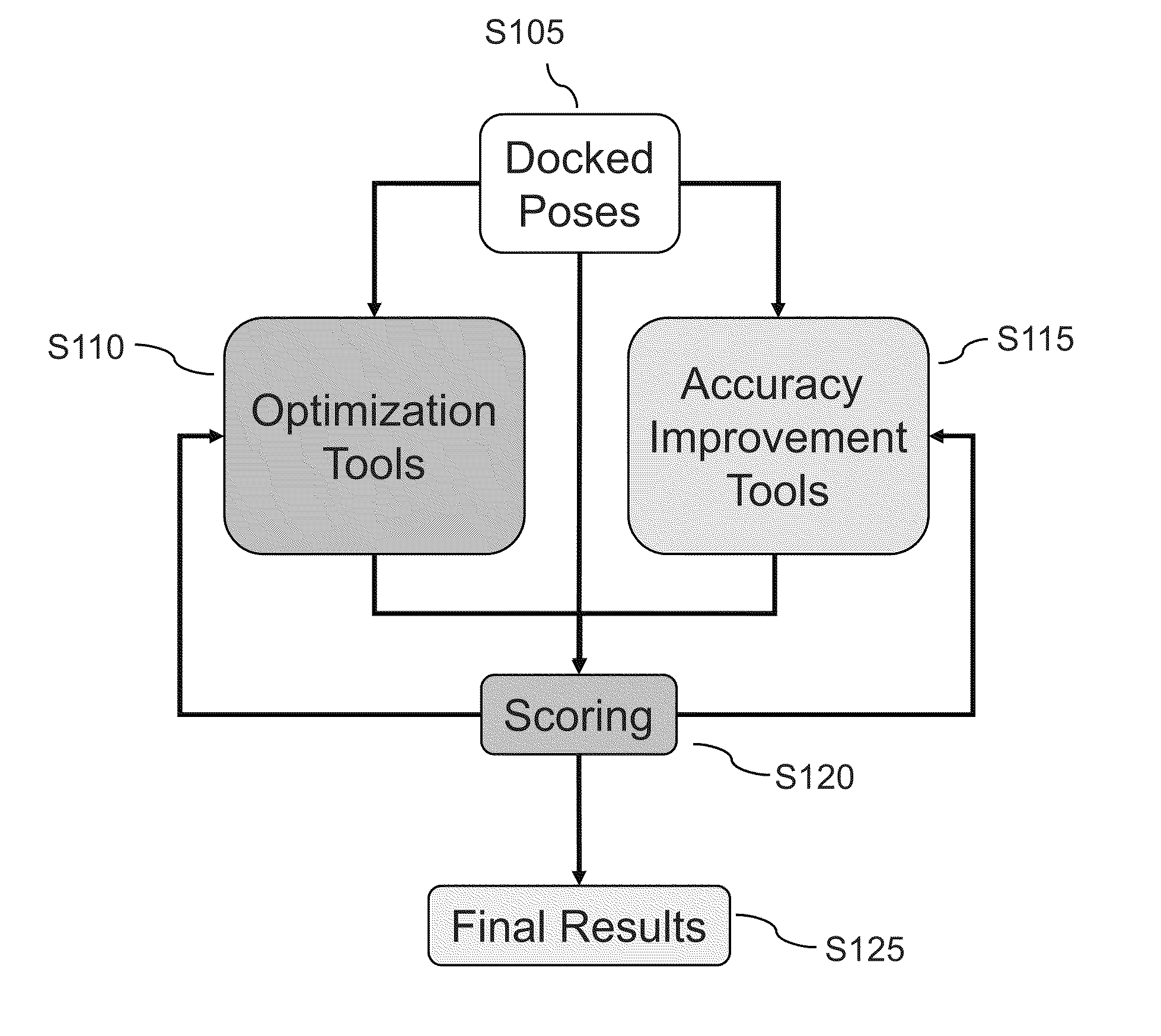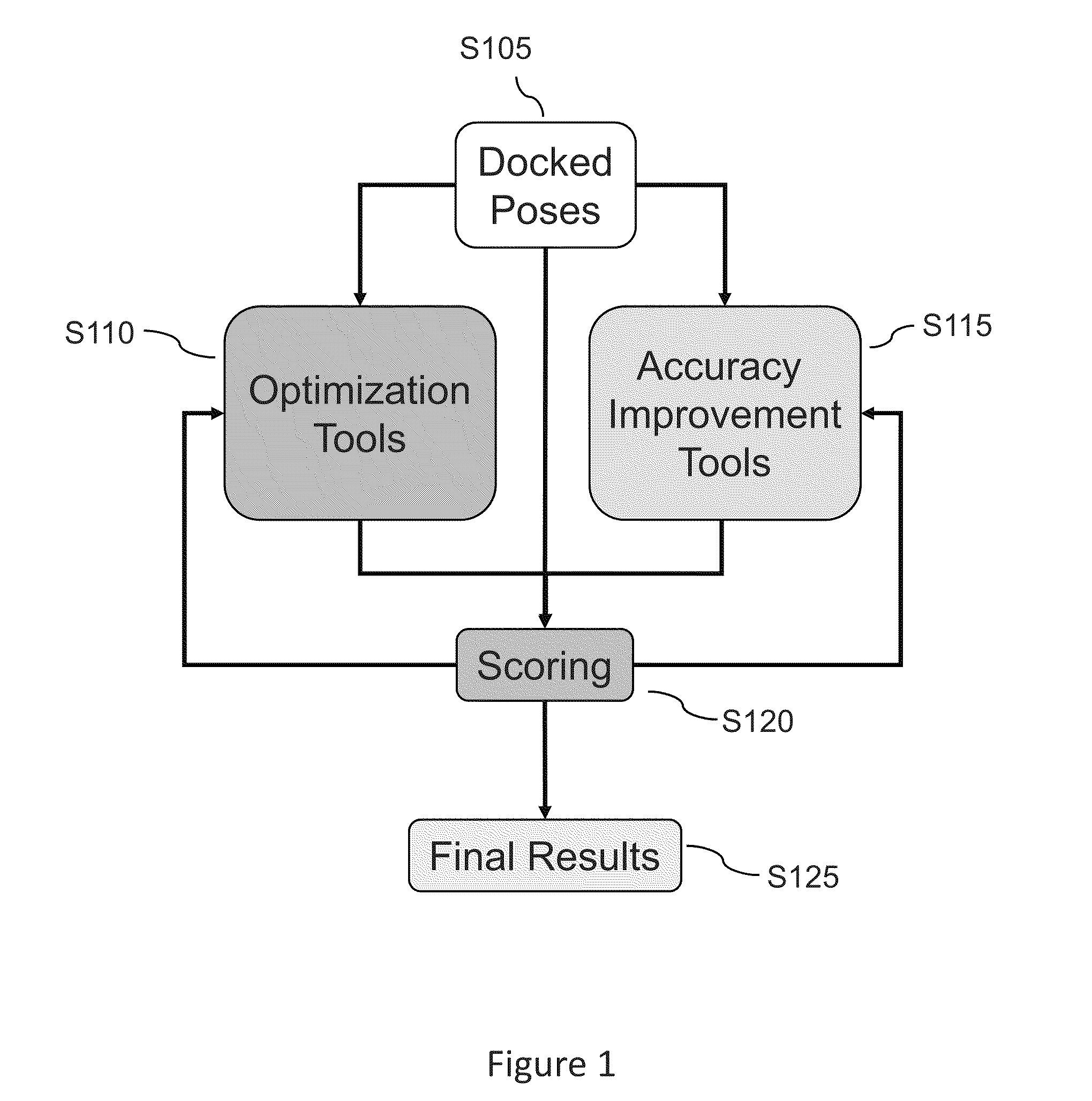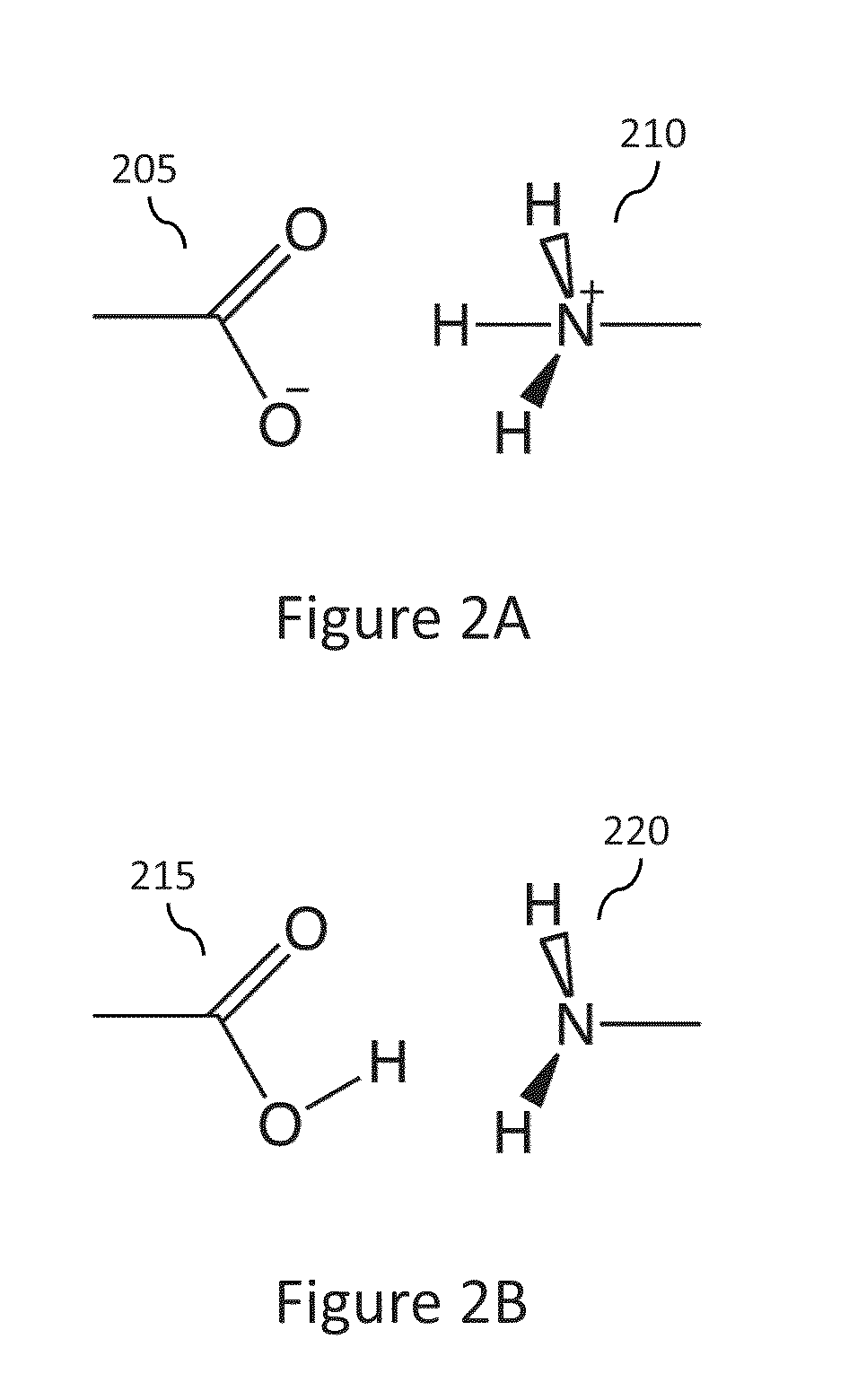Methods for prediction of binding site structure in proteins and/or identification of ligand poses
a protein and binding site technology, applied in the field of binding site structure prediction, can solve the problems of general challenge in evaluating potential conformations, computational power and time,
- Summary
- Abstract
- Description
- Claims
- Application Information
AI Technical Summary
Benefits of technology
Problems solved by technology
Method used
Image
Examples
Embodiment Construction
Methods and systems are described herein for identification of structures and / or poses of molecules following interaction of proteins with other proteins, peptides, or small molecules (also generally called ligands).
The term “protein” as used herein indicates a polypeptide with a particular secondary and tertiary structure that can participate in, but not limited to, interactions with other biomolecules including other proteins, DNA, RNA, lipids, metabolites, hormones, chemokines, and small molecules.
The term “polypeptide” as used herein indicates an organic polymer composed of two or more amino acid monomers and / or analogs thereof. The term “polypeptide” includes amino acid polymers of any length including full length proteins and peptides, as well as analogs and fragments thereof. A polypeptide of three or more amino acids is typically also called a peptide. As used herein the term “amino acid”, “amino acidic monomer”, or “amino acid residue” refers to any of the twenty naturally ...
PUM
 Login to View More
Login to View More Abstract
Description
Claims
Application Information
 Login to View More
Login to View More - R&D
- Intellectual Property
- Life Sciences
- Materials
- Tech Scout
- Unparalleled Data Quality
- Higher Quality Content
- 60% Fewer Hallucinations
Browse by: Latest US Patents, China's latest patents, Technical Efficacy Thesaurus, Application Domain, Technology Topic, Popular Technical Reports.
© 2025 PatSnap. All rights reserved.Legal|Privacy policy|Modern Slavery Act Transparency Statement|Sitemap|About US| Contact US: help@patsnap.com



